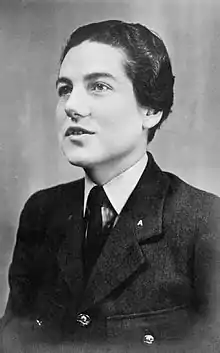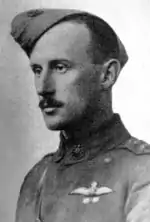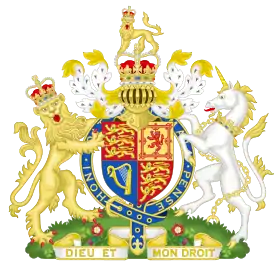Empire Gallantry Medal
The Medal of the Most Excellent Order of the British Empire for Gallantry, usually known as the Empire Gallantry Medal (EGM), was a British medal awarded for acts of the gallantry that did not reach the standard required for the Albert Medal and the Edward Medal. King George V introduced it on 29 December 1922. Recipients were entitled to use the post-nominal letters "EGM" and as a Medal of the Order of the British Empire it was also divided into military and civil divisions. Unlike appointments to the Order of the British Empire it could be awarded posthumously.
| Medal of the Most Excellent Order of the British Empire for Gallantry | |
|---|---|
 Empire Gallantry Medal | |
| Type | Civil decoration |
| Description | Circular medal, 36 mm in diameter, with the recipient's name around the rim, obverse picturing Britannia, her left and resting on a shield and right hand holding a trident, with a sun in the upper right corner. The medal's appearance varied between its conception and revocation |
| Presented by | United Kingdom of Great Britain and Northern Ireland |
| Eligibility | British and Commonwealth subjects |
| Status | Revoked by Royal Warrant on 24 September 1940 |
| Established | 29 December 1922 |
| First awarded | 1 January 1923 |
| Total | 130[1] |
| Total awarded posthumously | 8 |
| 1936 Order of Wear | |
| Next (higher) | Kings' Police Medal[2] |
| Next (lower) | Indian Police Medal[2] |
History
In 1922, the original Medal of the Order of the British Empire was split into two, the Medal of the Order of the British Empire for Gallantry (EGM) awarded for acts of gallantry, and the Medal of the Order of the British Empire for Meritorious Service that is generally known as the British Empire Medal (BEM) awarded for meritorious services and was the lower level award of the Order of the British Empire. The EGM was awarded until 1940, when it was superseded by the George Cross.
Shortly after the commencement of the Blitz, King George VI created the George Cross to recognise gallantry by men and women in all walks of civilian life. It was to rank immediately after the Victoria Cross. The Empire Gallantry Medal was revoked by Royal Warrant on 24 September 1940. All living recipients and the next-of-kin of recipients who had been posthumously awarded the medal after 3 September 1939 (the start of World War II) were obliged to exchange the Empire Gallantry Medal for the George Cross. It was only in 1971, that then living recipients of the Albert Medal and Edward Medal were deemed to be George Cross recipients. Most former Albert Medal and Edward Medal recipients accepted the invitation to change their original insignia for the George Cross but unlike the Empire Gallantry Medallists they were not obliged to exchange their original insignia.[1]
Appearance
The medal and ribbon were designed first by Langford Jones, though it was changed throughout its existence. The phrase "For God and the Empire" was inscribed round the upper side of the obverse. The first type of reverse had six lions, with the Royal Cypher centred.[3] The 2nd type of reverse had four lions, two on either side of the Royal Cypher. The original ribbon was plain purple, with the addition of a thin vertical red stripe for military awards. A silver laurel branch was added diagonally to the ribbon for both types of award in 1933. The ribbon changed to rose pink with pearl grey edges in July 1937, with an addition pearl grey vertical stripe for military awards, and stayed in this version until its revocation.
Statistics
- Civil Division 64 (3 posthumous)
- Military Division 62 (5 posthumous)
- Honorary awards 4
The four honorary awards were not able to be exchanged for the George Cross and neither were the four posthumous awards prior to 3 September 1939. Of the remaining 122 awards, 112 were exchanged including four Military Division posthumous awards gazetted after the start of World War II.
Selected recipients
- The following list (mostly of those recipients with standalone articles) is in part extracted from the fuller list at List of George Cross recipients. Also intended to be included here are 18 awards of the EGM that were not exchanged for the George Cross. Where present in the table below, these are marked (*).
| Name | Rank (or Role) | Organisation | Date gazetted | Image |
|---|---|---|---|---|
| Walter Anderson | Flying Officer | Royal Air Force | 12 April 1929[4] | — |
| Walter Arnold | Leading Aircraftman | Royal Air Force | 9 November 1928[5] | — |
| Henry George Blogg | Coxswain | Cromer Lifeboat | 30 June 1924[6] | .JPG.webp) |
| Theodore Bogdanovitch | Mulazim | Trans-Jordan Frontier Force | 30 June 1939[7] | — |
| Guy Branch (*) | Pilot Officer | Royal Air Force (Auxiliary Air Force) | 30 June 1939[8] |  |
| Abdus-Samad Golandaz | Land-lord, Property Owner and Sand Contractor | — | 4 June 1934[9] | — |
| Alexander Mitchell Hodge | Sub Lieutenant | Royal Navy | 14 March 1940[10] | — |
| Richard Frank Jolly | Commander | Royal Navy | 23 December 1939[11] | — |
| Cecil Kelly | Barge pilot | — | 5 February 1937[12] | — |
| Alfred Lungley | Lance Sergeant | British Army | 19 November 1935[13] | — |
| Frederick Hamilton March | Chauffeur | — | 5 December 1924[14] |  |
| William Neil McKechnie | Flight Cadet | Royal Air Force | 18 October 1929[15] | — |
| Joan Daphne Mary Pearson | Corporal | Women's Auxiliary Air Force | 19 July 1940[16] |  |
| Patrick Gordon Taylor | Captain | Aus-NZ Airmail Flight | 9 July 1937[17] |  |
| Dorothy Louise Thomas | Nurse | Middlesex Hospital | 2 March 1934[18] | — |
| James Gordon Melville Turner | Radio Officer | Merchant Navy | 13 October 1939[19] | — |
References
- P E Abbott and J M A Tamplin. British Gallantry Awards, Nimrod Dix & Co, 1981, ISBN 0 902633 74 0, Chapter 36, pp. 240–43
- "No. 34277". The London Gazette. 24 April 1936. p. 2622.
- Imperial War Museum. "Empire Gallantry Medal (Medal of the Order of the British Empire for Gallantry) (Military Division) & EGM [OMD 14]". IWM Collections Search. Retrieved 21 April 2013.
- "No. 33485". The London Gazette. 12 April 1929. p. 2433.
- "No. 33437". The London Gazette. 9 November 1928. p. 7301.
- "No. 32953". The London Gazette. 4 July 1924. p. 5157.
- "No. 34641". The London Gazette (Supplement). 30 June 1939. p. 4435.
- "No. 34496". The London Gazette. 25 March 1938. p. 2003.
- "No. 34056". The London Gazette. 4 June 1934. pp. 3571–7424.
- "No. 34913". The London Gazette (Supplement). 2 August 1940. p. 4787.
- "No. 34759". The London Gazette (Supplement). 22 December 1939. p. 8545.
- "No. 15359". The Edinburgh Gazette. 5 February 1937. pp. 112–114.
- "No. 34221". The London Gazette. 19 November 1935. p. 7319.
- "No. 32999". The London Gazette. 5 December 1924. p. 8851.
- "No. 33544". The London Gazette. 18 October 1929. p. 6615.
- "No. 34900". The London Gazette. 19 July 1940. p. 4434.
- "No. 34416". The London Gazette. 9 July 1937. p. 4414.
- "No. 34029". The London Gazette. 2 March 1934. p. 1422.
- "No. 34708". The London Gazette. 13 October 1939. p. 6862.
External links
- Information on the Empire Gallantry Medal
- Imperial War Museum. "George Cross and Empire Gallantry Medal". Archived from the original on 6 January 2009. Retrieved 21 April 2013.
